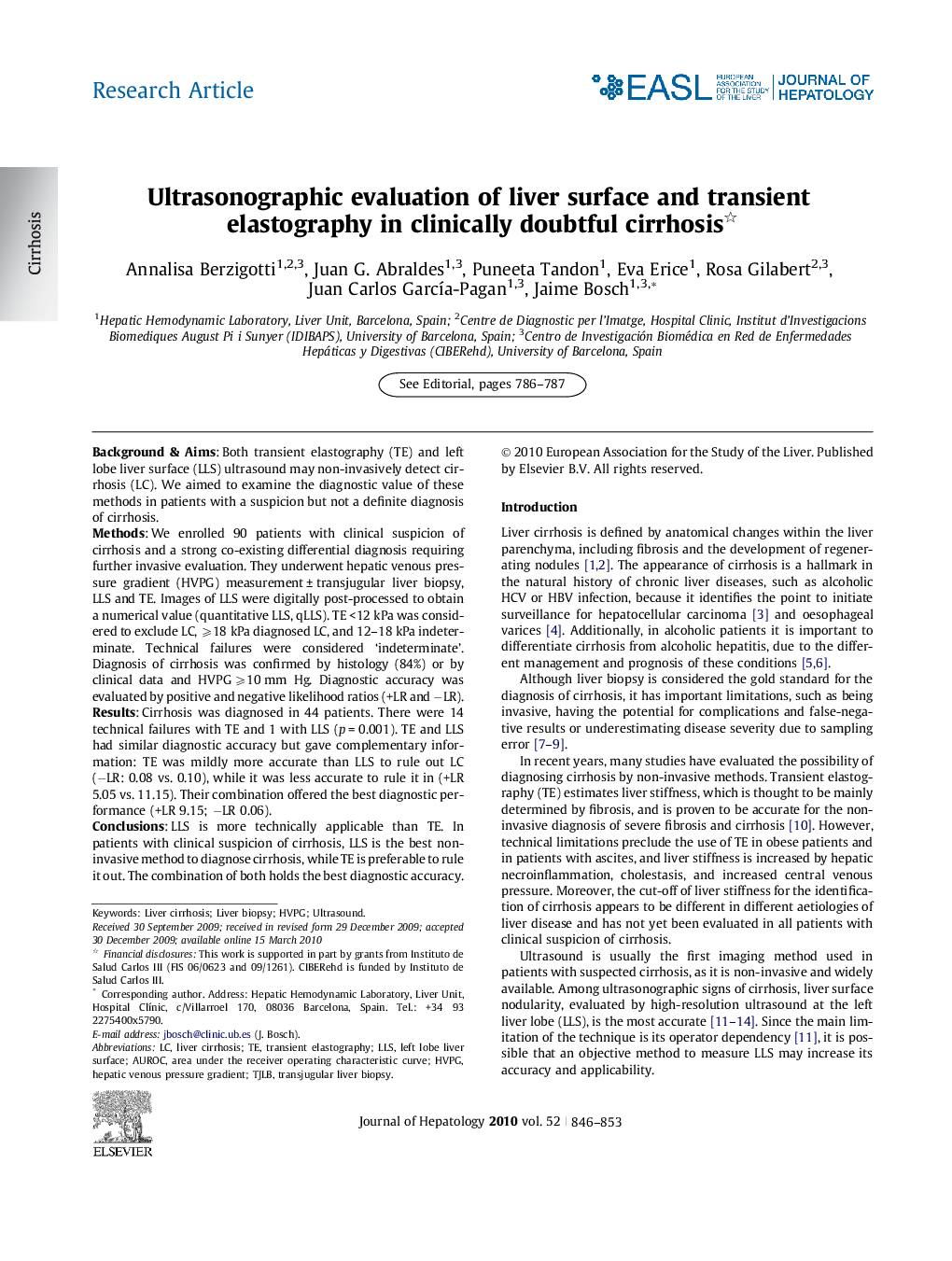| Article ID | Journal | Published Year | Pages | File Type |
|---|---|---|---|---|
| 6109221 | Journal of Hepatology | 2010 | 8 Pages |
Background & AimsBoth transient elastography (TE) and left lobe liver surface (LLS) ultrasound may non-invasively detect cirrhosis (LC). We aimed to examine the diagnostic value of these methods in patients with a suspicion but not a definite diagnosis of cirrhosis.MethodsWe enrolled 90 patients with clinical suspicion of cirrhosis and a strong co-existing differential diagnosis requiring further invasive evaluation. They underwent hepatic venous pressure gradient (HVPG) measurement ± transjugular liver biopsy, LLS and TE. Images of LLS were digitally post-processed to obtain a numerical value (quantitative LLS, qLLS). TE <12 kPa was considered to exclude LC, ⩾18 kPa diagnosed LC, and 12-18 kPa indeterminate. Technical failures were considered 'indeterminate'. Diagnosis of cirrhosis was confirmed by histology (84%) or by clinical data and HVPG ⩾10 mm Hg. Diagnostic accuracy was evaluated by positive and negative likelihood ratios (+LR and âLR).ResultsCirrhosis was diagnosed in 44 patients. There were 14 technical failures with TE and 1 with LLS (p = 0.001). TE and LLS had similar diagnostic accuracy but gave complementary information: TE was mildly more accurate than LLS to rule out LC (âLR: 0.08 vs. 0.10), while it was less accurate to rule it in (+LR 5.05 vs. 11.15). Their combination offered the best diagnostic performance (+LR 9.15; âLR 0.06).ConclusionsLLS is more technically applicable than TE. In patients with clinical suspicion of cirrhosis, LLS is the best non-invasive method to diagnose cirrhosis, while TE is preferable to rule it out. The combination of both holds the best diagnostic accuracy.
